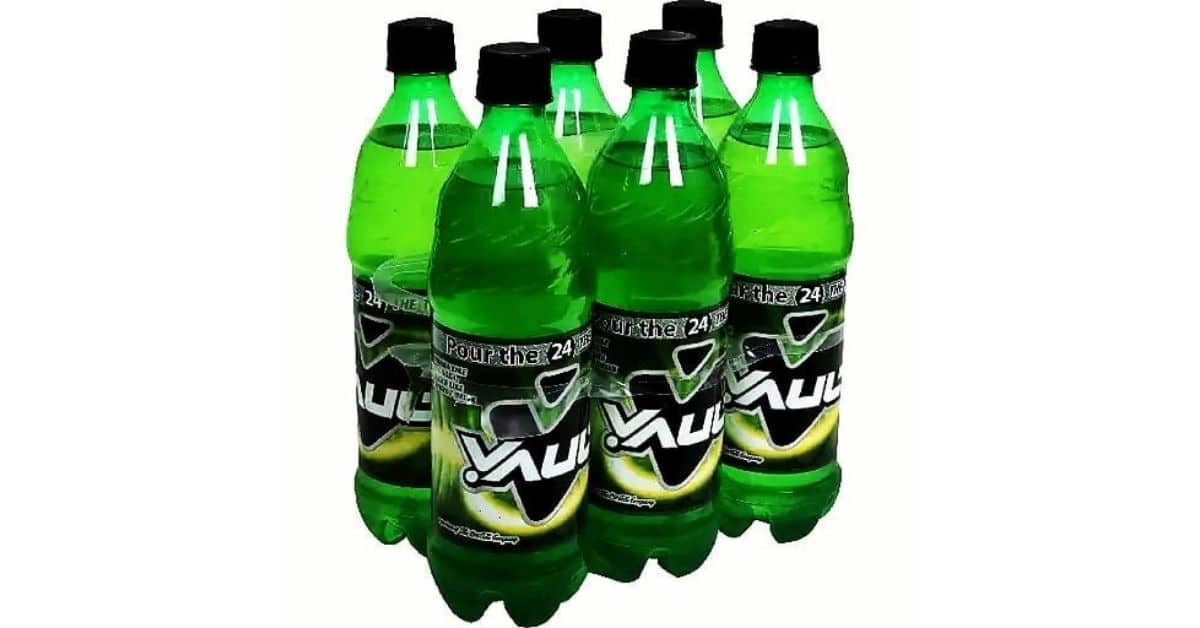Vault Soda (History, Pictures & Commercials)
If you love fizzy drinks, you are probably familiar with all the major names in the business. Nearly everyone has had 7UP, Coke, or Dr. Pepper at least once in their life. There are many sodas that have not had the staying power that these classics have enjoyed, however. You might have missed out on these unique soda treats that did not make it long-term in the soda market.
Vault Soda is one of those soda products that did not stay on shelves for many years, but that made a big impression on those who enjoyed it. Made by Coca-Cola, this soda was rebranded a few times to try and make it more marketable before finally being pulled off shelves. If you missed out on this unique Coca-Cola product, you can learn more about it here.
Please leave a review or any memories of this snack in the comments at the bottom of this page. Thank you!
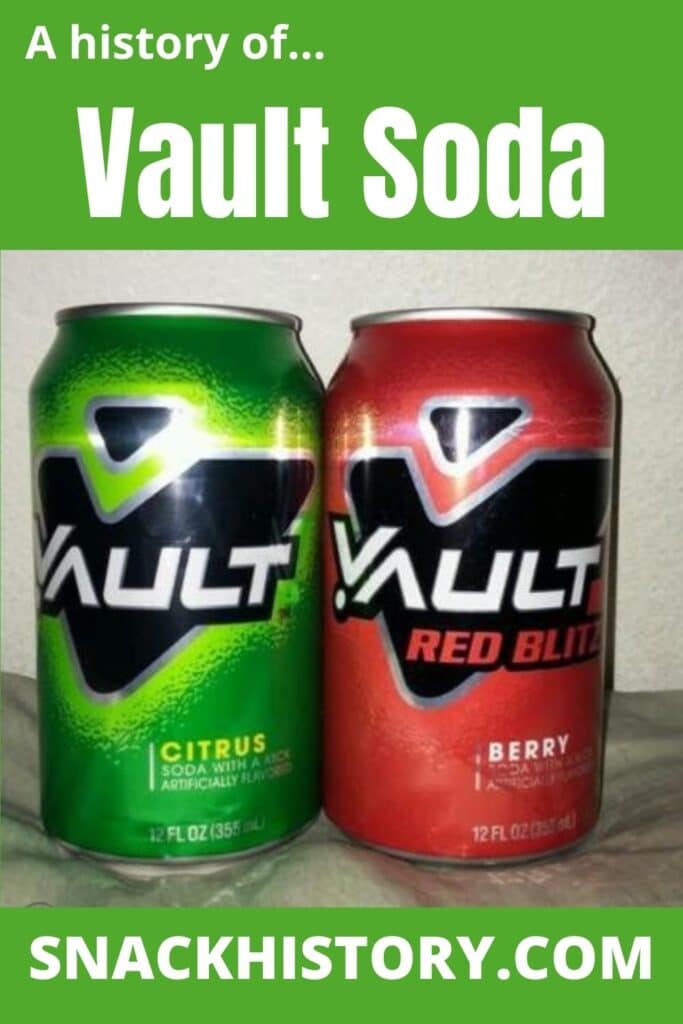
History
Vault was a sweetened and carbonated beverage that was made by Coca-Cola. The product was first sold in June of 2005. It was sold in the US until 2011 when flagging sales were not improved by numerous revisions to the marketing of the product. Coca-Cola was marketing this soda as a combination of a thirst-quenching soda like Sprite that had the caffeine of an energy drink and a great taste like Coca-Cola itself.
This combination of different factors was intended to access buyers who loved energy drinks but did not enjoy the often tart and dry-mouth feeling that these products leave behind in your mouth. The slogans that were tried over the years that this product was sold were, “Chug & Charge”, “Get to it!”, and “Get it Done!” There was an attitude in the marketing of this product that was a bit like how Snickers products have sometimes been sold. The connection between this product and energy and activity was supposed to be clear to those buying it.
Coca-Cola probably felt that creating a citrus product to rival 7Up and Squirt Soda and Sprite was a good move, only so long as the soda offered something else that was unique. The combination of increased caffeine and clear soda flavoring was supposed to bridge the gap between the enjoyable flavor of these fruity sodas and the lack of caffeine that many people preferred about darker cola-style drinks.
Vault Soda was supposed to contain 47 mg of caffeine per 8 oz serving. This was a higher amount of caffeine than what Surge offered at the same time and Vault also beat out Mountain Dew’s 54 mg per 12 fl oz and Mello Yellow’s 51 mg per 12 fl oz. Vault was sold in the original version and there was also a Vault Zero which was sugar-free.
The recipe for this drink was not that much different than the one used to make Surge Soda. The original test market where the drink performed well was centered in Alabama, Georgia, Kansas, Michigan, the Carolinas, and Texas. There were a few other states that were included as well, and the performance was good enough for Coca-Cola to go ahead with Super Bowl XL commercials advertising it. Following the 2006 Super Bowl, the product was moved to all major markets in the US.
Vault was sold in 16.9 fl oz cans, and 24 fl oz PET bottles. There were also 1- and 2-liter bottles on the market and 16 oz extended cans. Grape and Peach Vault were added to the product lineup after the first year that it was sold shortly after the introduction of the zero-sugar version of the soda. When Coca-Cola decided to compete with Mountain Dew Code Red, they released a Vault Soda called Vault Red Blitz. This was a berry-flavored soda that included guarana.
The main selling method that Coca-Cola used to promote this product was to link it with making you able to do hard tasks or impossible stunts. There were commercials that showed those enjoying Vault soda doing extreme sports, engaging in strange science and making robotic scarecrows, or lifting heavy things and blowing things up to impress people.
The message was supposed to be that you could do anything if you drank this product, but there was a definite connection that was also being made between nerdy or thin men being able to do feats of strength and skill due to Vault. This might have been an early stumble on the part of Coca-Cola because many of its ads followed this same basic plan.
Most energy drinks and sodas are marketed at both sexes equally, but this product was marketed more heavily at men. This was not that uncommon in the early days of energy drinks when these products were more linked with sports performance just like Gatorade and other enhancing drinks.
It is rare to see products marketed in this way today, but most products were still being marketed to one sex or another exclusively during this period, particularly when looking at TV commercials. Perhaps if the product has been marketed to a wider array of consumers, it would have enjoyed a longer lifespan.
Vault Zero was reformulated in 2006 due to a lawsuit that said that ingredients used in the product could form benzene, a carcinogenic compound. Fanta Pineapple was involved as well and had to make similar changes to their recipe as well. Mello Yello Cherry had been released by Coca-Cola in 2001, but it had not performed well. It was hoped that this new version of a colorful and sugary treat would sell better than the Mello Yello version had.
Ironically, Mello Yellow was the product that replaced Vault Soda in 2011 when it was brought back on the market with an improved recipe. Energy drinks had started to carve out a really unique market space for themselves that had nothing to do with soda-style products. The split between the two kinds of products has only continued to grow and the divide between what is a soda and what is an energy drink is wider than ever.
Vault Soda likely fell prey to more than just a lack of imagination in the marketing tactics used to promote it. If the product had hit the market during the era that saw Squeeze Pops and other sugary and strangely-colored products go to market, it might have enjoyed a longer-lasting success. The fact that Mello Yello has made the grade and replaced Vault indicates just how clearly the energy drink market has deviated from the soda market.
If you never got to try Vault soda, there might be hope for you. There have been efforts by loyal fans in recent years to get the soda brought back to life. Coca-Cola has considered the pleas of consumers in the past, but this product might be doomed never to return. There just does not seem to be a market space for this kind of drink these days, and the caffeine levels that were offered in Vault Soda have become the hallmark of energy drinks and not soda drinks.
Logo
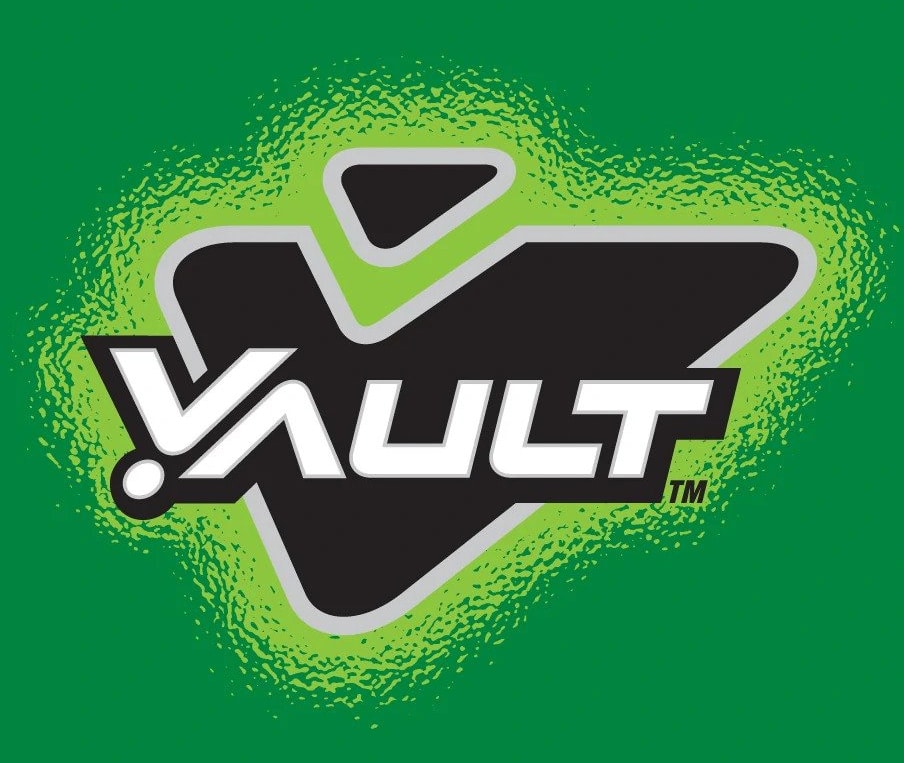
Versions
- Vault Original
- Vault Zero
- Vault Red Blitz
- Vault Grape
- Vault Orange
- Vault Peach
- Vault Lime
Ingredients
Per the Wikipedia entry for this soda:
- Carbonated water
- Citric acid
- High fructose corn syrup
- Natural and artificial flavors
- Concentrated orange juice
- Sodium benzoate
- Erythorbic Acid
- EDTA
- Caffeine
- Potassium Citrate
- Yellow #5
- Carob Bean Gum
The Zero version of the drink ingredients:
- Carbonated water
- Citric acid
- Aspartame
- Natural and artificial flavors
- Concentrated orange juice
- Sodium benzoate
- Erythorbic acid
- EDTA
- Caffeine
- Potassium citrate
- Yellow #5
- Carob bean gum
- Acesulfame Potassium
Nutrition
| Serving Size: | 1 Can | % Daily Value * |
| Amount Per Serving | ||
| Calories | 180 | 11% |
| Total Fat | 0g | 0% |
| Saturated Fat | 0g | 0% |
| Trans Fat | 0g | 0% |
| Sodium | 45mg | 2% |
| Total Carbohydrate | 47g | 20% |
| Dietary Fiber | 0g | 0% |
| Sugar | 47g | 66% |
| Added Sugars | 47g | 196% |
| Protein | 0g | 0% |
- The % Daily Value (DV) tells you how much a nutrient in a serving of food contribute to a daily diet. 2000 calories a day is used for general nutrition advice.
Livery
The packaging of this soda might have had something to do with its demise as well. The bottles were clear with a simple plastic wrapper around the middle that was black and stated the flavor of the soda. The logo was also designed a bit strangely, with a simple black V and a simplistic lettering choice for the word Vault. It is almost hard to read the logo as designed and the cans did not make it much clearer. The color of the cans made it clear what flavor you were getting but the logo was no clearer on the cans than it was on the bottles.
When you consider the colorful and unique packaging choices made for most other sodas, this bare-bones and rather difficult-to-read design might have been an issue for this product. This is especially true since this product was originally marketed heavily in soda machines where there would not have been much of the product to see. The constant changing of the slogan of the product also indicates that there was no real plan for the original launch of the soda either. Slogans are really important to drink products for brand recognition and it is possible that these failings led to the ultimate failure of this soda product just as much as the poor timing of its release to market.
Pictures
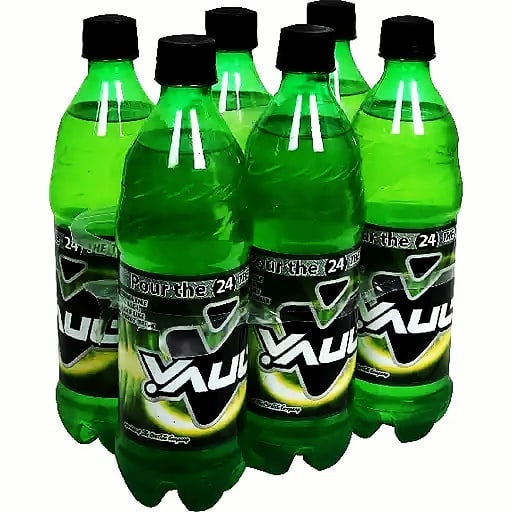
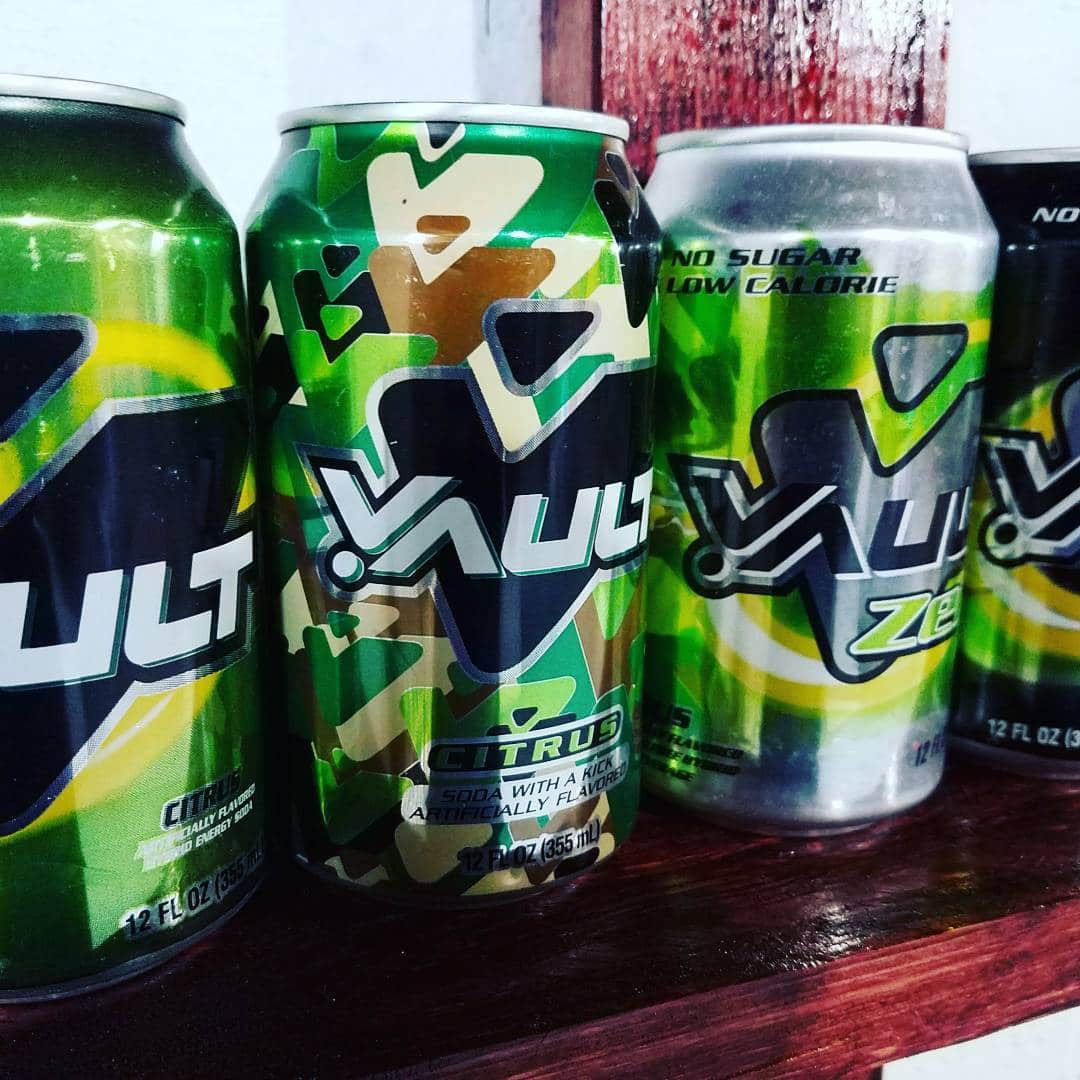
Commercials
Standard Vault soda ad showing the soda as making you strong:
The well—known scarecrow ad which is really quite odd:
A commercial linking the product with extreme sports:
Vault paintball commercial:

My name is Brianna and I love writing on all topics. Candy history fascinates me and I am passionate about sharing my love of this topic with everyone else!
Please leave a review or any memories of this snack in the comments below. Thank you!
Click here for a full A-Z list of Snacks and Candy
